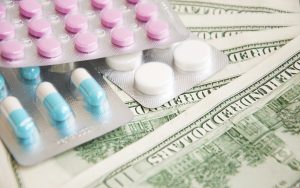Everyone may face unique issues when it comes to their substance abuse disorder. Maybe you’re a stay at home mom who has a tendency to smoke to destress from the day, an accountant who uses drugs after work, or a college student who uses drugs to bond with her sorority sisters. No matter what place in your life you’re at, being a woman can make a huge difference in how drugs affect your brain, your blood flow, and your hormones. While the NIH is working to extend their research on how gender differences correlate with increased use of certain drugs, current evidence show that there’s certain traits that women should be aware of before they partake in drug use. Let’s walk through the most key ways women experience and use drugs differently than the men in our lives.

Female Substance Abuse Disorder
Your gender can significantly impact your drug experience, especially if you’re a female. Our bodies are beautiful, strong, and capable of doing amazing things. Yet, there are certain drawbacks from our biological makeup that can cause drugs to leave more lasting damage on our system than our male counterparts. Drugs tend to affect us differently in the following ways:
- Women have it worse when they want to quit smoking than men. This is due to our body naturally processing the nicotine ingredient much faster than men in general. Quicker metabolisms also explains why nicotine replacement therapies, using a drug store patch and even nicotine gum works better in men who use it. Be cautious and research your options if you’re trying to quit your habit of smoking. Sometimes our relatives or friends who have quit “cold turkey’ found success, but that doesn’t mean that the method will work for you. All of our bodies are different due to our makeup and environmental factors in addition to our gender.
- Women who have a substance abuse order damages their reproductive system. Certain drugs can increase the likelihood of infertility, having a child who is disabled or with other mental complications, and even early onset of menopause. Pregnant women are regularly using drugs like tobacco and have higher rates of alcoholism are the most vulnerable to these risks.
- Women face larger social stigma with their substance abuse disorder than man. The sad reality is that women, especially if they’re in a relationship or are a mother, are judged much more harshly for illicit drug use than men. Fearing any judgment or loss of important relationships prevents many women who are addicted to drugs from seeking help. Some are worried that seeking help while being pregnant or after having a child could cause them legal problems that could tear their family apart.
- Women tend to react more strongly to drugs that are becoming legalized. The legalization of marijuana has become a double edged sword as its medical effects are helping thousands yet encouraging addiction in thousands of more people. While I agree that legalizing marijuana will help our security and economy as a country, not enough people are being educated yet on how to use it responsibly. Unlike men, women tend to experience more panic attacks, depression, and develop an abuse disorder more quickly after using marijuana more frequently. Yet, the reported rates of seeking treatment for marijuana use disorder are low for both sexes.
- Some research shows that women are more sensitive to pain than men and may have more incentive to use opioid prescriptions to cope. Women also may be more likely to take prescription opioids without a prescription and take a larger dose over time. Since the drug also helps with anxiety or high stress levels, it can become very difficult for woman to stop their addiction to opioids if they become too reliant on it in their everyday life. With the growing opioid epidemic it is crucial to know about what the symptoms of opioid addiction is if you happen to be prescribed the common drug by a doctor.
- While men generally will have higher rates of alcohol use, younger girls from the ages of 12 to 20 have slightly higher rates of alcohol misuse than other female age groups. Women also have a reportedly higher risk than men from binge drinking that stems from mental health issues, alcohol-related car accidents, heart disease, a sudden stroke, and liver failure. In addition, there are also female related health risks like having unprotected sex, unwanted pregnancy or transmitted disease, and the increased possibility of becoming a victim of domestic violence and even sexual assault. If you find yourself at a social function or a party at college, practice safe judgement and only go with a group of people that you truly trust to have around you. If you feel any bad feelings from a certain person or the place the alcohol is being served at, remember to protect yourself first and foremost.
Combating Drug Abuse In Both Genders
We may have discovered that being a female can cause a longer list of unwanted after effects from drug use, but don’t let those warning signs discourage you. If you are a woman who needs help with her drug addiction or know someone going through a similar experience, make sure you give them a helping hand by listening to their problems, offering an open mind, and referring them to a professional treatment center in the area. If you’re a male, you’re still not invincible from substance abuse disorder as the need for new experiences, the pressure from society to perform, and the stigma of showing weakness is constant. Bite the bullet of your ego and talk to someone you trust before it’s too late. Sometimes the hardest step to fixing our addiction is admitting there’s a problem. All of us have problems in our lives that come in different forms. Do your homework on what center in your area sounds right for you and you won’t be disappointed by the impact even one visit leaves.











